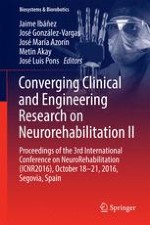2017 | OriginalPaper | Buchkapitel
A Stress Classification System Based on Arousal Analysis of the Nervous System
verfasst von : R. Martínez, J. Abascal, A. Arruti, E. Irigoyen, J. I. Martín, J. Muguerza
Erschienen in: Converging Clinical and Engineering Research on Neurorehabilitation II
Aktivieren Sie unsere intelligente Suche, um passende Fachinhalte oder Patente zu finden.
Wählen Sie Textabschnitte aus um mit Künstlicher Intelligenz passenden Patente zu finden. powered by
Markieren Sie Textabschnitte, um KI-gestützt weitere passende Inhalte zu finden. powered by
